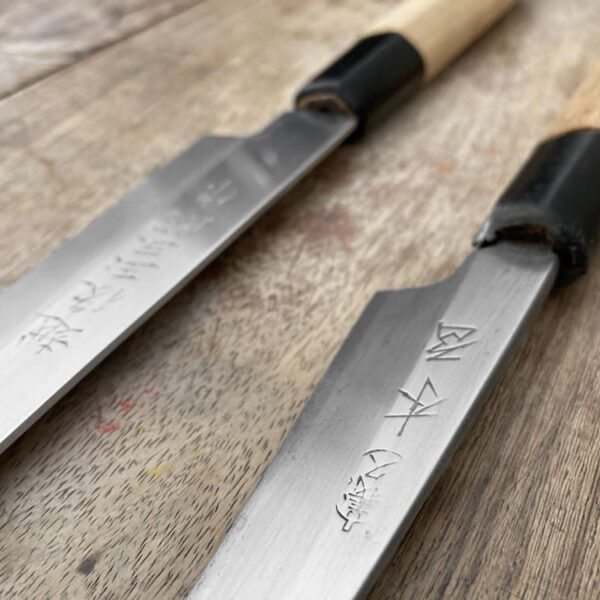Our Japanese knives have experience written all over them. After countless hours of sushi indulging use and of honing there comes a time for honorary replacement!
Facts about Japanese knives:
Japanese knives are generally made from harder steel than Western knives. This allows for the edges to hold sharper for longer. While the blade is able to withstand wear and tear to a greater degree than Western knives, the harder steel can be brittle. It is imperative that you use the correct type of Japanese knife for individual tasks. Japanese style knives also differ in that the shape of the blade is very rarely curved.
Choosing the right shape:
1. A knife designed for vegetables and fruits has a much broader blade than knife designed for cutting raw fish – these have very narrow blade.
2. The more curved the edge, the more it is designed for slicing and cutting with a rolling action and for chopping (with the tip on the board). The straighter the edge, the easier it is for slicing (with a lateral action as in slicing smoked salmon), dicing (as you would potatoes or hard vegetables) and chopping with a straight vertical cut
3. Narrow blades are not suitable for cutting fast or with a traditional rolling action. They are also not suitable for chopping.
4. Wide blades generally tend to be longer than their narrower cousins and therefore difficult to use for pairing, peeling and general cutting in the hands.



